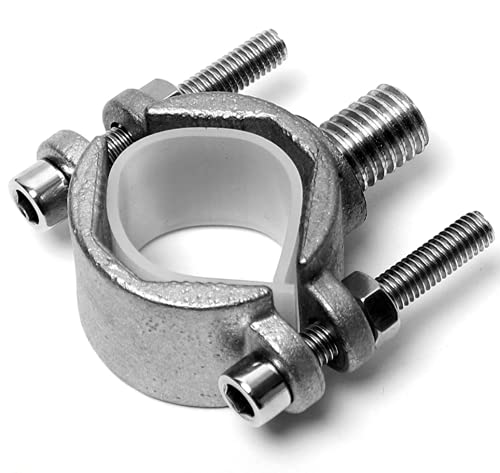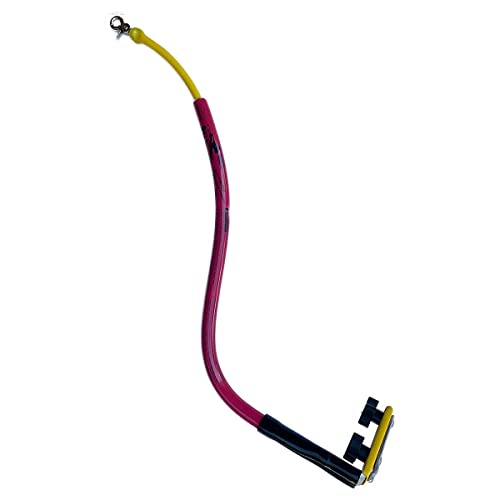Introduction: Why a Canine Bike Attachment Is a Smart Investment
Exercising your dog is essential for physical and mental health, especially for high-energy breeds. For pet owners who love cycling, a canine bike attachment is an innovative way to safely combine outdoor rides with your dog’s exercise needs. Instead of juggling a leash while steering a bike, this attachment allows for hands-free, controlled rides that benefit both the rider and the dog.
According to the Centers for Disease Control and Prevention (CDC.gov), regular physical activity reduces obesity and behavioral issues in dogs. With a canine bike attachment, you can maintain a consistent fitness routine for your pet—rain or shine.
What Is a Canine Bike Attachment?
A canine bike attachment is a spring-loaded, secure tethering system that connects your dog to your bicycle. It’s specially designed to allow your dog to walk, jog, or run safely beside your bike without the risks associated with a handheld leash. The system typically includes:
- A metal arm that mounts to your bike
- A shock-absorbing spring mechanism
- A safety release in case of emergencies
- A durable leash or cord
Unlike traditional leash setups, these attachments offer a much safer and more stable biking experience, minimizing the risk of falls or accidents caused by sudden tugs.
Benefits of Using a Canine Bike Attachment
1. Hands-Free Safety
The most immediate benefit is increased control. Holding a leash while riding is dangerous. A canine bike attachment secures your dog to the bike while keeping both your hands on the handlebars.
2. Controlled Direction and Distance
Dogs stay at a consistent distance from the bike, usually on one side. This prevents them from crossing in front of the wheel or getting tangled in the leash.
3. Exercise for Energetic Dogs
High-energy breeds like Huskies, Border Collies, or Labradors require more exercise than most walks can provide. A bike ride satisfies this need quickly and efficiently. The AVMA (American Veterinary Medical Association) emphasizes the importance of breed-appropriate activity levels.
4. Space-Saving for Urban Owners
Not everyone has access to large yards or off-leash parks. Biking with a dog using a canine bike attachment is ideal for urban dwellers looking to give their dogs meaningful exercise in limited space.
Who Should Use a Canine Bike Attachment?
This tool is perfect for:
- Pet owners with large or medium dogs
- People living in urban or suburban areas
- Dog trainers and behavior specialists
- Pet owners managing canine obesity
- Athletes who want to include their dog in workouts
If your dog is healthy, energetic, and leash-trained, a canine bike attachment can be a great addition to your daily routine.
Top Features to Look For in a Canine Bike Attachment
1. Shock-Absorbing Spring Mechanism
A good canine bike attachment will include a spring that absorbs pulling force, which prevents the bike from tipping if the dog jerks suddenly.
2. Safety Quick-Release
In case your dog gets spooked or caught, the quick-release allows instant disconnection, avoiding injury.
3. Compatibility with Most Bicycles
Choose a product that fits standard bikes without the need for permanent modifications.
4. Durable Materials
Look for attachments made from stainless steel or other rust-resistant materials, especially if you’ll ride in various weather conditions.
Recommended Canine Bike Attachments
1. Springer Dog Exerciser
- Available at: SpringerAmerica and Amazon
- Weight Capacity: Dogs up to 90+ lbs
- Features: Patented spring, quick-release safety mechanism, easy installation
- Best For: Large, strong dogs
The Springer Dog Exerciser is one of the most trusted canine bike attachments on the market, known for its safety and durability.
2. Bike Tow Leash
- Available at: Amazon
- Weight Capacity: Dogs up to 185 lbs
- Features: Patented design, attaches to rear axle
- Best For: Strong pullers or multi-dog setups
This attachment is recommended by numerous dog trainers and therapy dog programs.
How to Train Your Dog to Use a Canine Bike Attachment
Step 1: Leash and Walk First
Before biking, walk your dog alongside the attachment. Allow them to become comfortable with its presence.
Step 2: Practice in a Safe Area
Use a quiet park or empty lot to practice. Ride slowly while encouraging your dog with commands and treats.
Step 3: Increase Distance Gradually
Start with short rides of 5–10 minutes. As your dog becomes more confident, you can increase duration and speed.
Step 4: Monitor Behavior
Watch for signs of fatigue, stress, or overexertion. Make sure your dog stays focused and is enjoying the ride.
Veterinarians at Cornell University (vet.cornell.edu) recommend gradual, positive reinforcement-based training for new equipment or routines.
Safety Tips for Biking with a Canine Bike Attachment
1. Always Use a Harness
Never attach the tether to your dog’s collar. Use a properly fitted harness to avoid neck strain or choking.
2. Avoid Rough Terrain
Stick to paved or smooth trails. Avoid gravel, sand, or areas with heavy traffic or obstacles.
3. Hydrate Regularly
Bring water for both yourself and your dog. Dogs can overheat quickly, especially during exercise.
4. Check Paws After Each Ride
Inspect your dog’s paws for scrapes or burns from hot pavement.
5. Follow Local Regulations
Always check city ordinances for biking with dogs. Refer to local government sites such as parks.ca.gov or your city’s official website.
Combining a Canine Bike Attachment with Other Exercise Tools
A canine bike attachment is excellent, but it shouldn’t replace all other forms of activity. Variety is essential. Here are other complementary tools:
- Dog treadmills for indoor training on rainy days
- Agility sets for mental stimulation
- Fetch and tug toys for playtime at home
The Association for Pet Obesity Prevention (petobesityprevention.org) suggests that combining aerobic and mental activities significantly improves canine health outcomes.
Can All Dogs Use a Canine Bike Attachment?
No, not every dog is suited for biking. The following dogs may not benefit:
- Puppies under 12 months (their joints are still developing)
- Brachycephalic breeds (e.g., Bulldogs) that overheat easily
- Dogs with behavioral issues like aggression or anxiety
Always consult your veterinarian before beginning a new exercise regimen.
Real-World Reviews and Success Stories
Thousands of users on Amazon report excellent results using canine bike attachments. Many say their dogs look forward to their daily bike rides, improving both physical health and behavior. Reviews for the Springer Dog Exerciser consistently praise its ease of use and safety.
Additionally, SpringerAmerica features testimonials and tutorials that show how to maximize the product’s benefits.
Maintenance and Storage
- Clean regularly to remove dirt and road debris
- Lubricate joints to keep the spring mechanism functioning properly
- Store indoors when not in use to avoid rust or weather damage
These small steps extend the lifespan of your canine bike attachment and ensure it works safely every time.
Final Thoughts: Is a Canine Bike Attachment Worth It?
For many pet owners, the answer is a resounding yes. A canine bike attachment offers a safe, hands-free way to exercise your dog while enjoying your own fitness routine. It’s ideal for energetic dogs, city living, and anyone looking to deepen the bond between dog and human through shared activity.
With a range of trusted options from Amazon and SpringerAmerica, there’s a perfect model out there for every bike and breed.
Before starting, be sure to consult with a veterinarian, especially if your dog has health conditions. Trusted sources like AVMA, CDC, and Cornell Vet offer valuable guidance on safe pet exercise.



